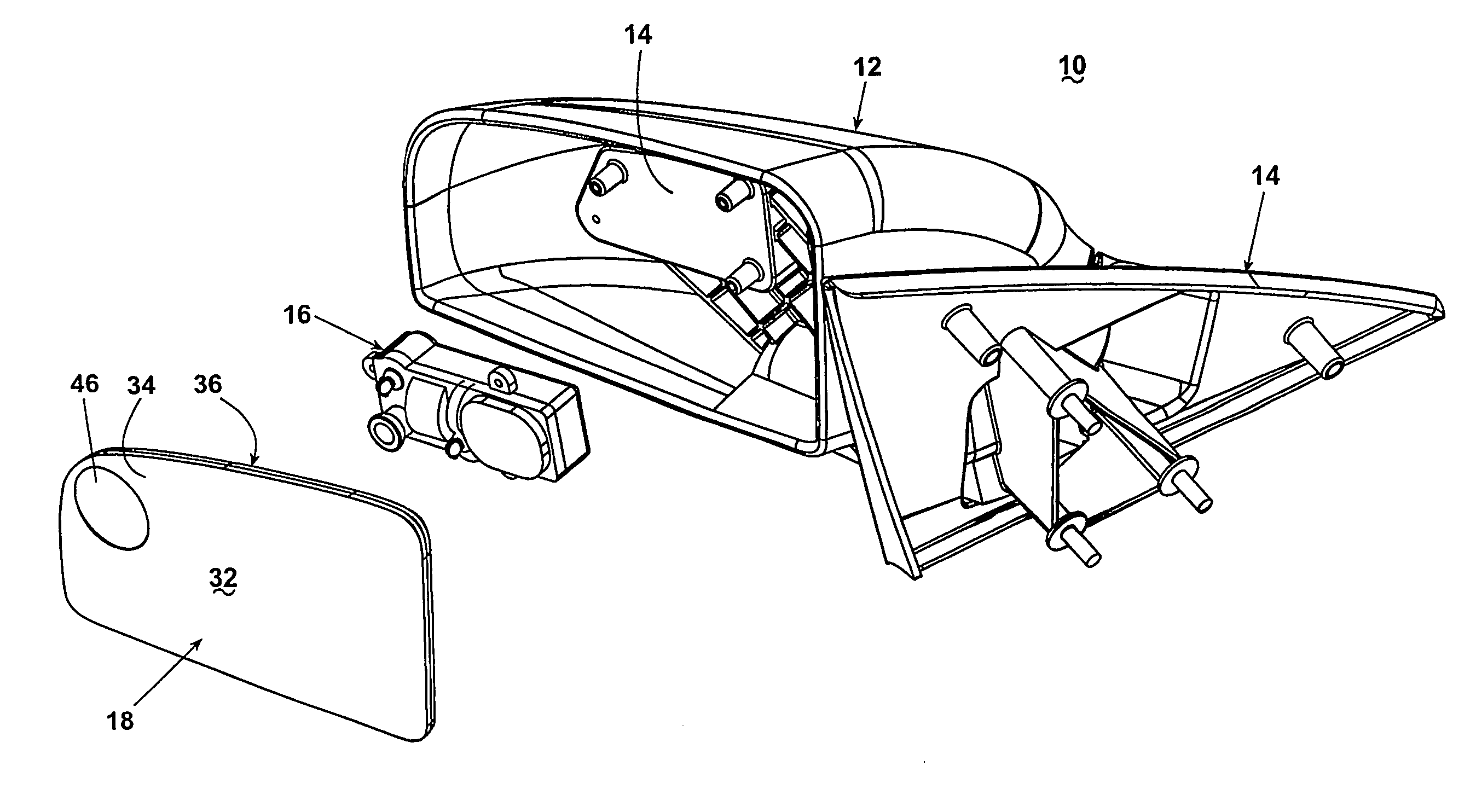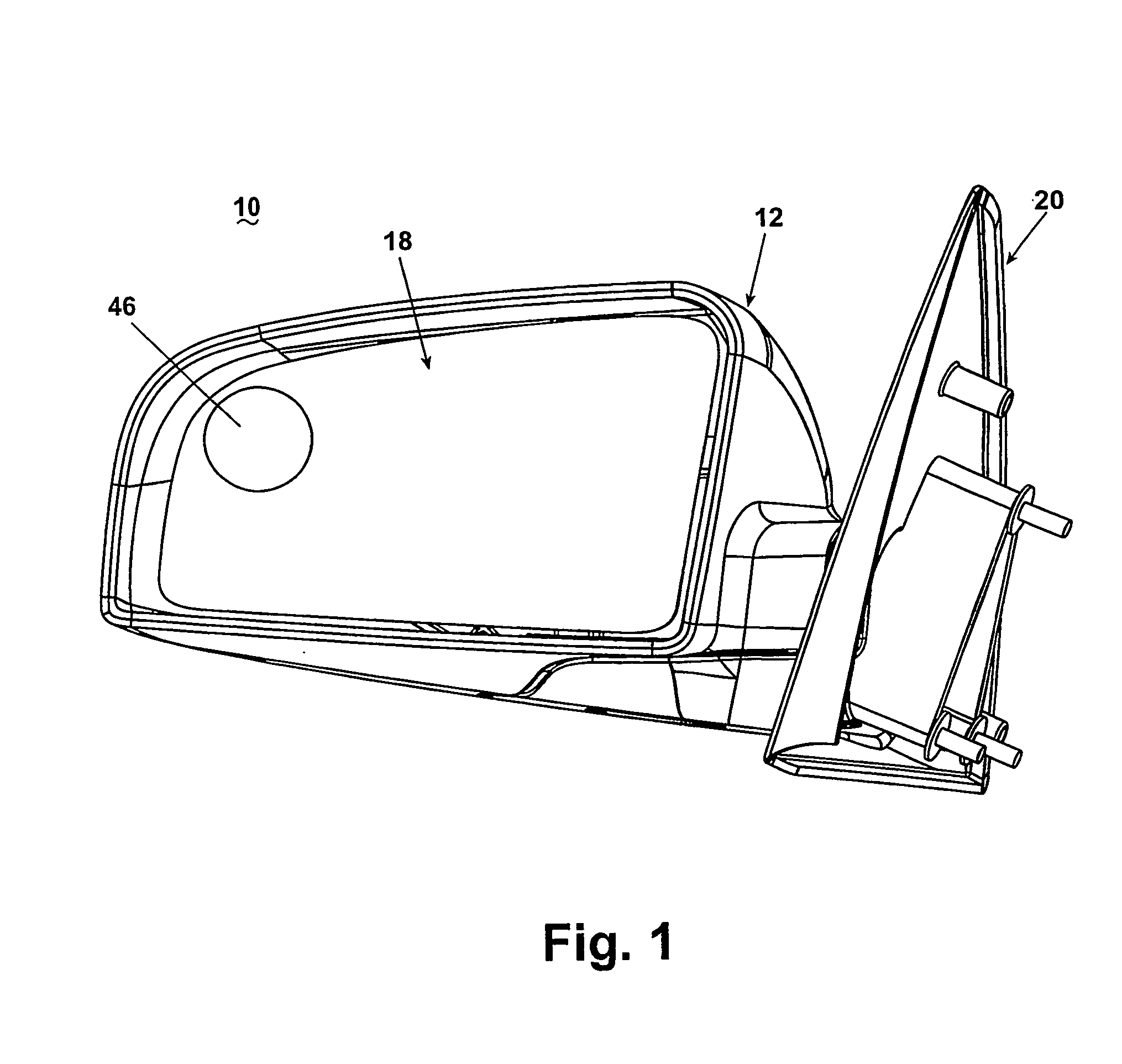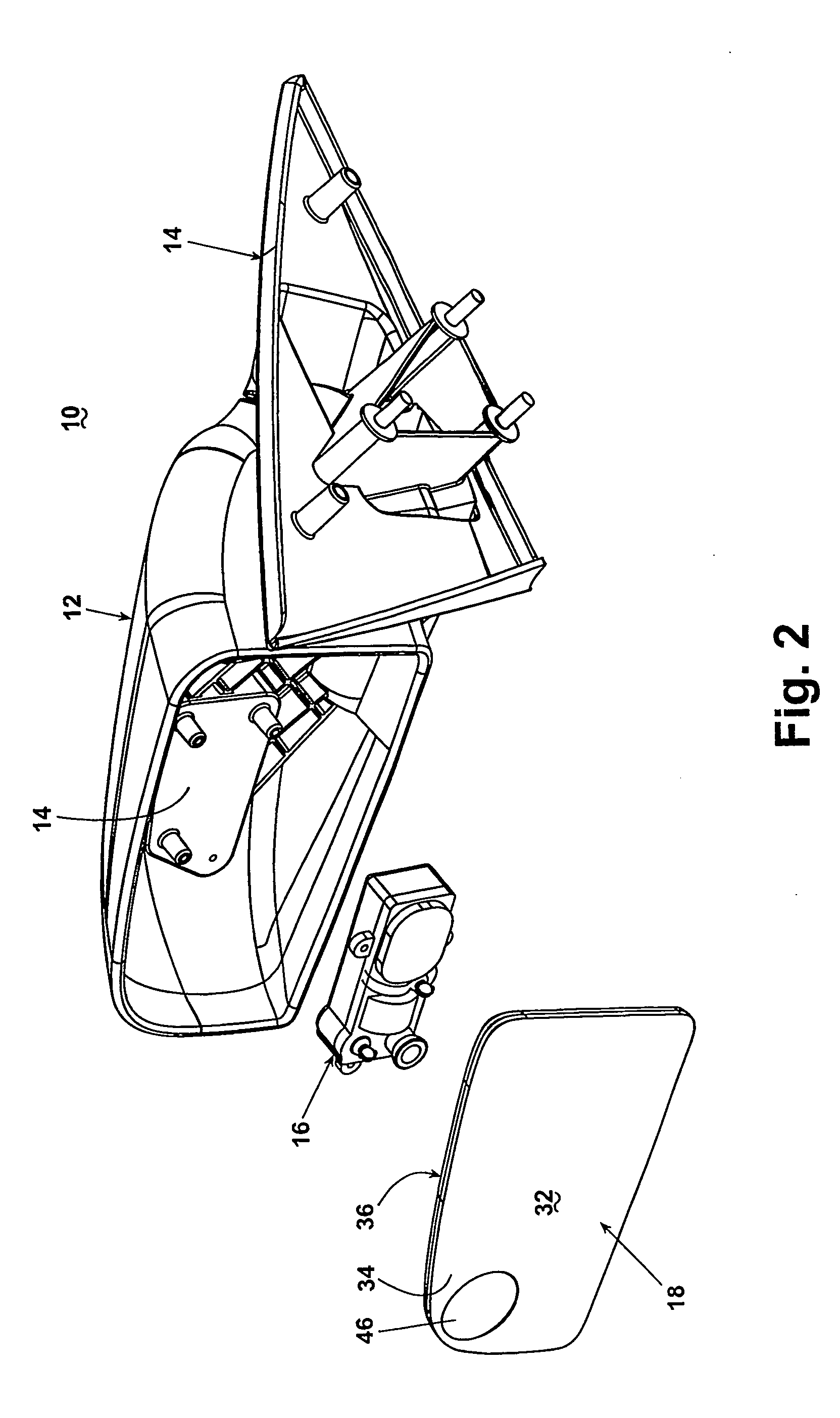Vehicle mirror having polymeric reflective film element and self-dimming element
a reflective film and mirror element technology, applied in the field of rearview mirrors, can solve the problems of increasing the risk of costly repairs or replacements, increasing the cost of fabrication and assembly process, and affecting the quality of the mirror element,
- Summary
- Abstract
- Description
- Claims
- Application Information
AI Technical Summary
Benefits of technology
Problems solved by technology
Method used
Image
Examples
first embodiment
[0061] A coated plate mirror assembly 10 according to the invention is shown in FIGS. 1 and 2. The mirror assembly 10 comprises a housing assembly 12 enclosing a generally conventional mounting bracket assembly 14, a generally conventional adjustment assembly 16 (shown as a tilt actuator assembly), a reflective element 18, and a base assembly 20 for attaching the mirror assembly 10 to a motor vehicle (not shown). The housing assembly 12 is a generally conventional rearview mirror housing assembly for an automotive vehicle. The mounting bracket assembly 14 mounts the adjustment assembly 16 which, in turn, mounts the reflective element 18. The adjustment assembly 16 controls the vertical and horizontal sight adjustment of the reflective element 18. Although a single adjustment assembly is shown, multiple adjustment assemblies can be utilized, each adjustment assembly controlling a single specific function, such as horizontal axis and vertical axis adjustment. It will also be understoo...
second embodiment
[0071] Referring to FIGS. 7-9, the rearview mirror assembly is shown comprising a light assembly 70 comprising a plurality of lighting elements 72 in a frame 74, shown for purposes of illustration as arranged in a generally semicircular configuration. The lighting elements 72 are adapted to lie along the circumference of the convex surface 46, which will highlight and draw the driver's attention to the convex surface 46. The use of the reflective film 32 provides a plurality of individual reflective surfaces for the lighting elements 72 for magnifying the intensity of the light therefrom. These reflective surfaces are readily fabricated through the use of the film 32.
[0072] The lighting elements 72, such as small light bulbs or light-emitting diodes, are operably interconnected to the vehicle's 12-volt DC electrical supply and control systems for selective operation of the light assembly 70. As an example, the light assembly 70 can be electrically interconnected with the vehicle's t...
third embodiment
[0077] Turning now to FIGS. 10-13, the mirror assembly 10 is shown having several of the previously-described elements and additionally comprising a mounting plate 114, a first glass element 116, a second glass element 118, and a chromomorphic, i.e. color-changing, polymeric element 120. Thus, like numerals will be used to identify like elements.
[0078] It will be understood that, while a mirror assembly 10 suitable for attachment to an exterior portion of a vehicle, such as in a door-mounted rear view external mirror, is shown and described herein, the invention is equally applicable to an interior windshield-mounted mirror assembly without departing from the scope of the invention.
[0079] As shown in FIGS. 10-13, the mirror assembly 10 preferably comprises a mirror housing 122 mounted to a base 124. The mirror assembly 10 can also include an actuator 126 preferably provided for accomplishing typical pitch-and-roll adjustment of the mirror components 114-120 as is known in the a it....
PUM
 Login to View More
Login to View More Abstract
Description
Claims
Application Information
 Login to View More
Login to View More - R&D
- Intellectual Property
- Life Sciences
- Materials
- Tech Scout
- Unparalleled Data Quality
- Higher Quality Content
- 60% Fewer Hallucinations
Browse by: Latest US Patents, China's latest patents, Technical Efficacy Thesaurus, Application Domain, Technology Topic, Popular Technical Reports.
© 2025 PatSnap. All rights reserved.Legal|Privacy policy|Modern Slavery Act Transparency Statement|Sitemap|About US| Contact US: help@patsnap.com



